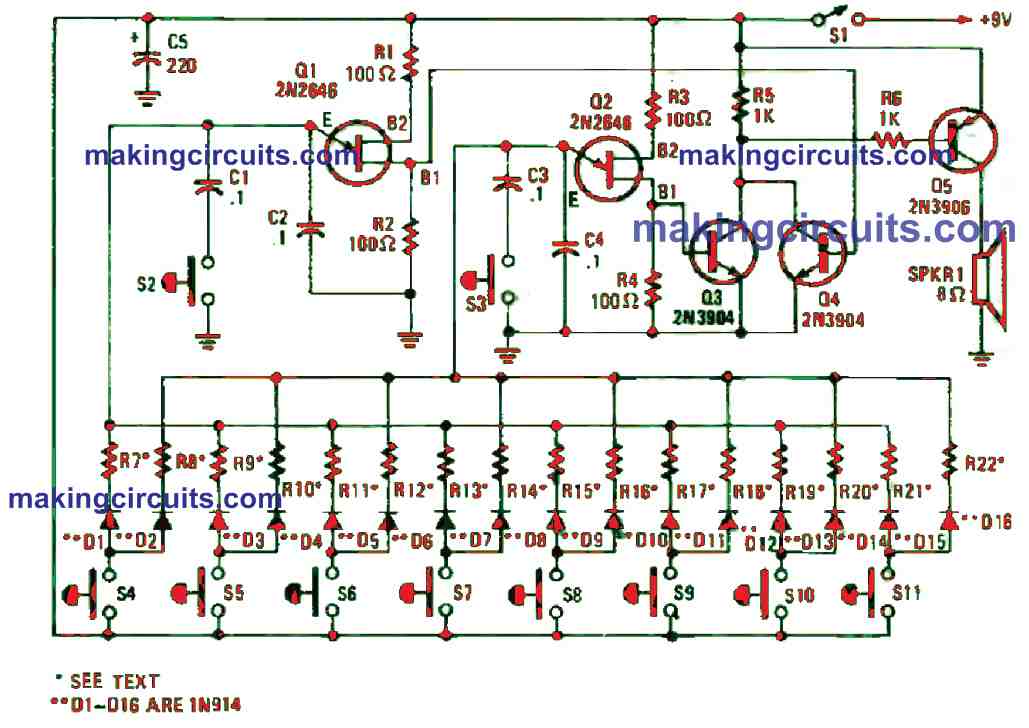The electronic bagpipe circuit explained below will generate an exact replication of music that we generally hear from an original mouth operated bagpipe instrument.
Circuit Description
In the figure below, an easy-to-construct electronic bagpipe is shown. It is not only simple to built but also makes a perfect gift for children.

The circuit replicates the dual-tone drone sound that is generated by the unique wind instrument.
The working of the electronic bagpipe circuit is straightforward. Unijunction transistors Q1 and Q2 are attached in a similar audio-oscillator circuits. Every oscillator frequency is set by one of the two resistors selected by one of the pushbutton switches, S4 to S11.
The odd-numbered resistors namely R7 to R21, decide the frequency for the Q1 oscillator circuit whereas the even-numbered resistors R8 to R22 set the frequency for circuit of Q2.
Once S4 is pressed, the positive supply will be channelled to both R7 and R8 via isolation diodes D1 and D2. This causes the pair of oscillators to function. A thin, fast-rising positive pulse is generated at B1 of both Q1 and Q2 for every cycle of operation.
Transistors Q3 and Q4 work as a standard audio mixer whereby it is used to assimilate the pulses from each oscillator.
The mixed signal at the collectors of Q3 and Q4 is attached via R6 to the base of Q5. At this point, the signal gets amplified and powers an 8 Ω speaker, SPKR1.
The resistor values (R7 to R22) that work to decide the oscillator’s operating frequency must be chosen in pairs to produce the dual-tone drone of the bagpipe. Moreover, the values must be in the range of 3.3 k and 33 k.
Either by hearing or using a frequency counter, you can select the resistors and tune the instrument. The 16 resistors, R7 to R22 can be swapped with the exact amount of miniature trimmer potentiometers to simplify the tuning process.
Switches S2 and S3 are utilised to lessen the oscillator’s frequency by about one-half when closed to generate a new set of tones.
Construction of this electronic bagpipe circuit is simple, and you can build it on a perfboard or PCB and enclose it within a plastic or wooden case.
For better aesthetic, you can build a special enclosure that makes this circuit to look more professional.
Pats List

Leave a Reply